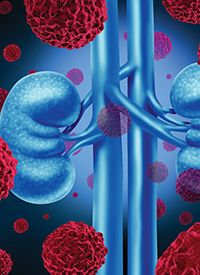Article
Combined ultrasound procedure found effective in treating ureteral stones
Author(s):
"These technologies have the potential to provide an advantageous and patient-centered solution for the gap between expectant management and urologic intervention for symptomatic ureteral stones,” says M. Kennedy Hall, MD, MHS.
"This study supports the efficacy and safety of using ultrasonic propulsion and burst wave lithotripsy," says the study authors.

Investigators at the University of Washington, Seattle reported on the efficacy of using ultrasonic propulsion and burst wave lithotripsy (BWL) as treatment for urinary stones in the ureter. They found that the combined transcutaneous focused ultrasound technique can be done with minimal pain and no anesthesia.1
"These technologies have the potential to provide an advantageous and patient-centered solution for the gap between expectant management and urologic intervention for symptomatic ureteral stones,” said lead author M. Kennedy Hall, MD, MHS, in a news release on the findings.2 Hall is an associate professor of emergency medicine and director of Data Science and Informatics at the University of Washington.
The investigators recruited adult patients with a diagnosed proximal or distal ureteral stone for the study. The median age of participants was 46 years, with the majority being male (69%). From the 29-patient cohort, 16 received ultrasonic propulsion alone and 13 received it with BWL bursts. The procedures were administered to patients without anesthesia.
The technique was done by placing a transducer on the patient’s skin and aligning it with the stone to deliver individual bursts no longer than 3 seconds at a time for ultrasonic propulsion and 30 seconds for BWL, for a total exposure time of 10 minutes.
Ultrasonic propulsion was used to reposition the stones and BWL was used to break up or dislodge the stones. Stone motion was observed in 19 (66%) of the patients and fragmentation of the stones was observed in 7 of the BWL cases (n = 13).
The radiologist administering the assessment of direct stone motion differentiated peristaltic motion and ureteral jets. Peristalsis in association with the propulsion bursts occurred in 14 (48%) of the cases and ureteral jets occurred in 9 (31%).
Passage of the stones was facilitated by direct stone motion (displacement or rotation), fragmentation, and peristalsis. Stones were passed in 86% of the distal ureteral stone cases (n = 21) in an average of 3.9 days with at least 2 weeks follow-up.
Patients were also asked to rate their pain on a scale of 1 to 10 before and after the procedure, and the average pain score (P = .03) significantly decreased after receiving the ultrasound procedure. Only 7 subjects reported associated discomfort, which occurred in association with ultrasonic propulsion in 2.2% (n = 18 of 820) of bursts across all patients.
“This study supports the efficacy and safety of using ultrasonic propulsion and burst wave lithotripsy in awake subjects to reposition and break ureteral stones to relieve pain and facilitate passage,” the authors concluded.
References
1. Hall MK, Thiel J, Dunmire B, et al. First series using ultrasonic propulsion and burst wave lithotripsy to treat ureteral stones. J Urol. Published online November 1, 2022. doi.org/10.1097/JU.0000000000002864
2. Combined ultrasound technique can reposition and break up urinary stones in awake patients. News release. Wolters Kluwer Health; Lippincott. October 7, 2022. Accessed October 17, 2022. https://www.newswise.com/articles/combined-ultrasound-technique-can-reposition-and-break-up-urinary-stones-in-awake-patients?sc=mwhr&xy=10016681
















